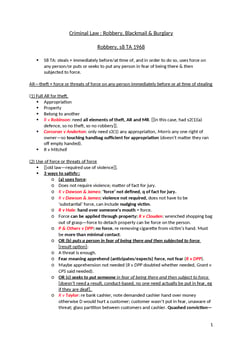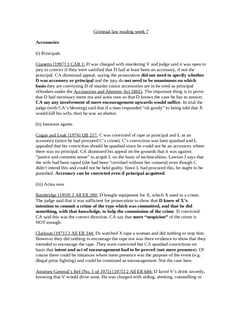R v Hancock and Shankland [1986] AC 455
Judgement for the case R v Hancock and Shankland
KEY POINTS
The critical aspect to consider in criminal law cases is the mental element, particularly in homicide and murder. One such case exemplifies this legal principle where a concrete block was dropped from a bridge onto a highway, resulting in the death of a taxi driver.
Central to the legal analysis is determining whether the death was a natural consequence of the action. This involves assessing the foreseeability of probable consequences.
Furthermore, the case delves into interpreting the term "intent." It prompts a need for elaboration to understand the nuances and requirements of establishing intent within the context of criminal law.
FACTS
The defendants, miners on strike, pushed a block of concrete and a concrete post from a bridge overlooking a three-lane highway where a miner was transported to work via taxi. Tragically, the concrete block struck the taxi's windscreen, resulting in the driver's death. The defendants faced trial on a charge of murder.
The prosecution argued that the defendants had conspired to perform acts collectively, with each of them intending to either cause serious harm or kill. They asserted that the defendants acted in concert and that the specific acts carried out by the defendant who pushed the block directly resulted in the death of the taxi driver.
In defense, the defendants claimed that their intention was not to harm or kill anyone. They believed the block and post were positioned over the middle lane while the taxi was driven in the nearby lane. Their intention, as per their account, was merely to block the road or induce fear.
Regarding the essential intent required for a murder charge, the judge, following the House of Lords' guidelines in Reg. v. Moloney [1985] A.C. 905, 929, instructed the jury. The judge advised the jury to consider whether death or serious injury was a natural consequence of the actions taken and whether the defendants foresaw this outcome as a natural consequence.
The defendants were found guilty and subsequently appealed. The Court of Appeal, contending that the judge's instruction was insufficient and potentially misleading, held that he should have clarified to the jury that, in the context of foreseeability and intent, "natural consequence" meant highly likely. As a result, the convictions for murder were overturned and replaced with verdicts of manslaughter.
This case then proceeded with an appeal by the Crown.
JUDGEMENT
The appeal was dismissed. In this judgment, it was established that when directing a jury concerning the issue of intent based on foresight of consequences, using the term "natural consequences" alone was insufficient to imply probability. The judge should explicitly reference probability and explain to the jury that the higher the probability of a consequence, the more likely it is that the consequence was foreseen. Furthermore, if the consequence was foreseen, it was also more likely that it was intended.
The judge's original direction, as it stood, had the potential to mislead the jury by placing undue focus on the causal link between the act and its consequences. Therefore, the Court of Appeal was correct in overturning the convictions for murder.
COMMENTARY
The core legal question here revolves around whether the death was a foreseeable consequence of the act, thus establishing intent. This case also underscores the necessity for precise explanations of intent within the context of criminal law.
The defendants, striking miners, pushed a concrete block from a bridge, leading to an unintended fatality. The prosecution claimed collective intent to harm or kill, while the defense argued they intended to block the road without causing harm.
The judge's jury instructions on intent and foreseeability were deemed insufficient, resulting in a change from murder to manslaughter convictions. This decision emphasizes that "natural consequences" alone don't imply probability. The judge should explicitly address probability and clarify the link between foreseeability and intent.
The Crown's subsequent appeal to reverse this decision was unsuccessful, emphasizing the importance of clear jury instructions in cases where intent is inferred from foreseeable consequences while avoiding excessive focus on the causal link between actions and outcomes.
ORIGINAL ANALYSIS
Two miners pushed a concrete block into the middle of the road that struck a taxi with a miner on the way to work in the back. The driver died. They claimed they were trying to scare or deter people from using the road, while the prosecution contended that they intended murder.
The judge asked the jury to consider if death was a natural consequence of their actions. They were convicted.
CA quashed the convictions, and HL agreed.
Lord Scarman
Said that foresight was not enough to assert intention.
The guidelines in Moloney (Was it a natural consequence) were unhelpful and confused the jury. Scarman’s test for intent is set out here: the greater the probability of the consequence, the more it is likely that the consequence was foreseen. If the consequence was foreseen, the greater probability is that the consequence was also intended.
RELATED CASES
For Further Study on R v Hancock and Shankland

A collection of the best GDL notes the director of Oxbridge Notes (an O...
Need instant answers? Our AI exam tutor is here to help.
Ask questions 🙋 Get answers 📔 It's simple 👁️👄👁️
Our AI is educated by the highest scoring students across all subjects and schools. Join hundreds of your peers today.
Get StartedRelated Product Samples
These product samples contain the same concepts we cover in this case.
| Criminal Law | Homicide Notes (20 pages) |
| GDL Criminal Law | Mens Rea Notes (9 pages) |
| Criminal Law | Mens Rea — Intention Recklessness And Negligence Notes (24 pages) |

 Since 2010, Oxbridge Notes has been a trusted education marketplace, supplying high-quality materials from top achievers at universities like Oxford, Cambridge, LSE, Harvard, and Yale.
Since 2010, Oxbridge Notes has been a trusted education marketplace, supplying high-quality materials from top achievers at universities like Oxford, Cambridge, LSE, Harvard, and Yale.